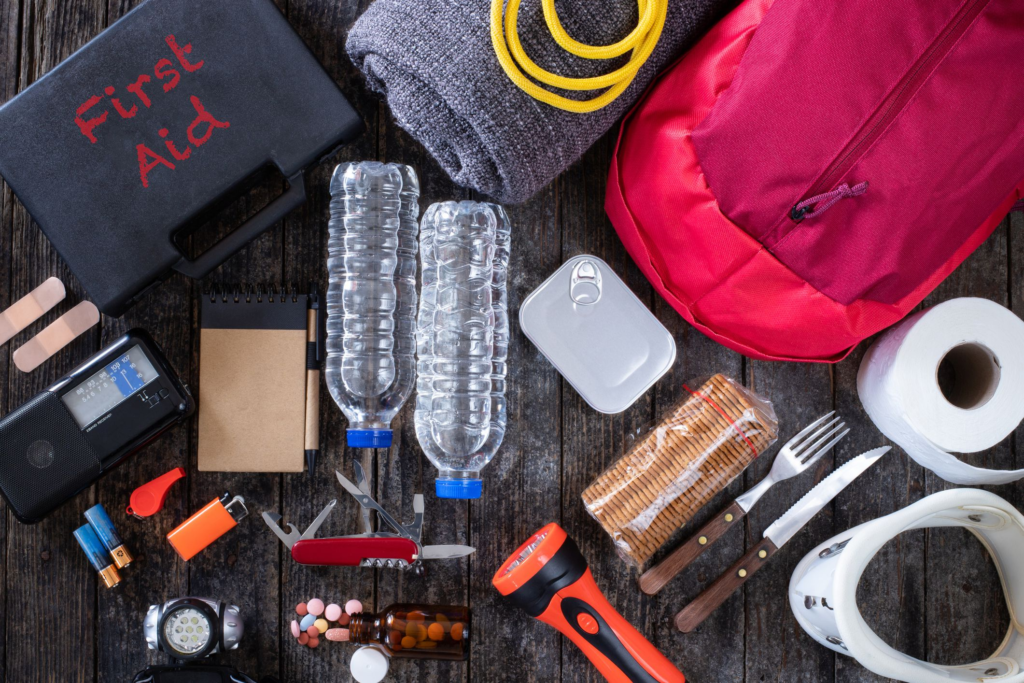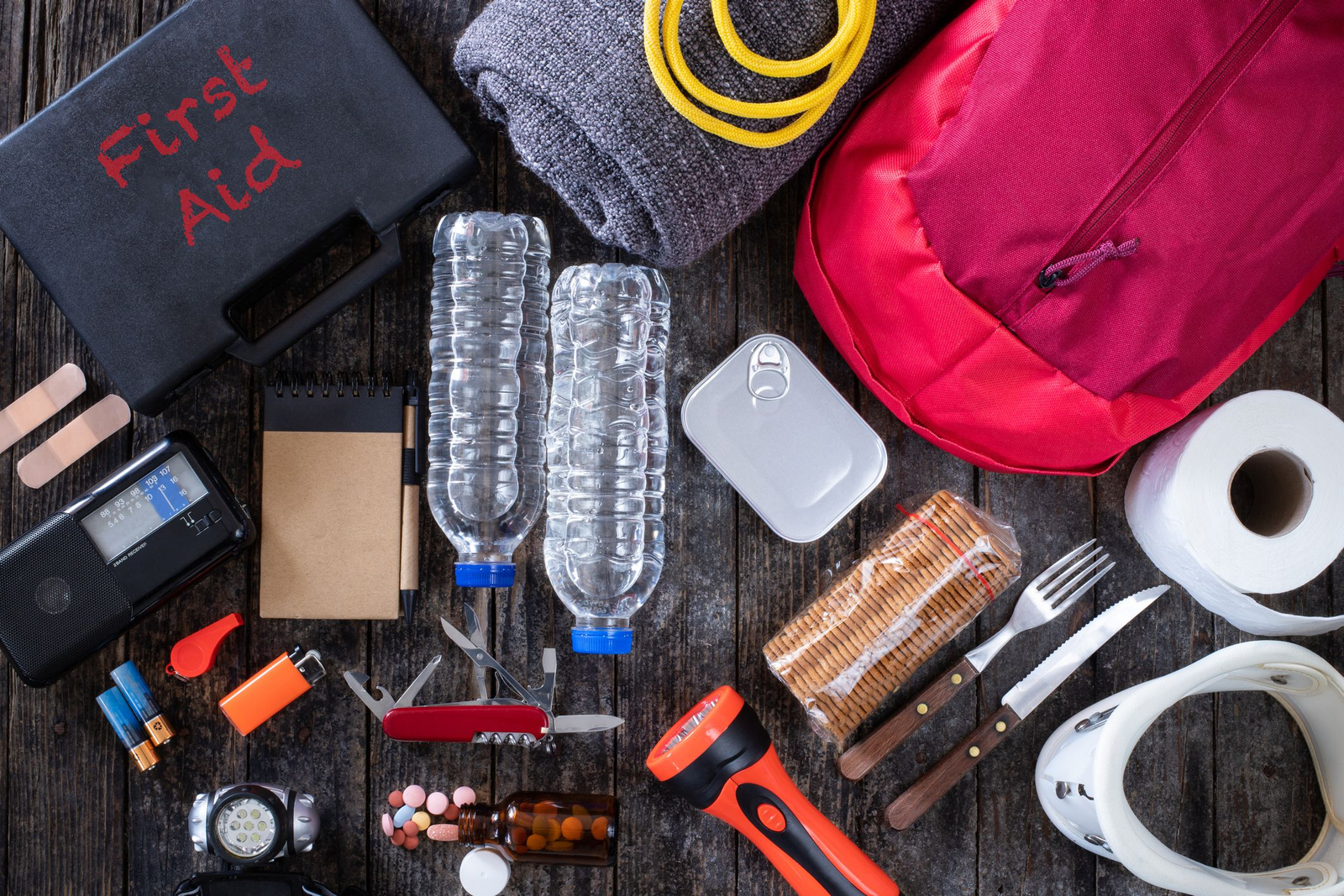Survival kits are essential for anyone who spends time outdoors or in remote areas. They contain a collection of items that can be used to survive in a variety of emergency situations, such as natural disasters, accidents, or getting lost.
Basic Survival Kit Essentials
First Aid Kit: A comprehensive first aid kit with bandages, antiseptic wipes, pain relievers, and other medical supplies.
Shelter: A lightweight, waterproof shelter such as a tent or tarp.
Warmth: Warm clothing, blankets, or a sleeping bag.
Light: A flashlight or headlamp with extra batteries.
Navigation: A compass, map, or GPS device.
Multi-Tool: A multi-tool with a variety of useful functions, such as a knife, pliers, and scissors.
Paracord: A versatile rope that can be used for various purposes, including shelter, securing gear, and creating traps.
Additional Items for Specific Environments
Depending on where you live or plan to travel, you may want to include additional items in your survival kit. For example:
Desert Survival Kit: Sunglasses, sunscreen, a hat, and a water purification device.
Winter Survival Kit: Warm clothing, a snow shovel, and a reflective blanket.
Marine Survival Kit: A life jacket, a signaling device, and a fishing kit.

Building Your Own Survival Kit
You can purchase pre-made survival kits, but it can also be rewarding to build your own. This allows you to customize the kit to your specific needs and preferences. When building your survival kit, consider the following factors:
Your Location: The items you include in your kit should be appropriate for the environment in which you’ll be using it.
Your Activities: If you’re an avid hiker or camper, you may need to include items that are specific to those activities.
Your Skill Level: Consider your own skills and knowledge when selecting items for your survival kit.
Tips for Using a Survival Kit
Practice: Familiarize yourself with the contents of your survival kit and practice using the items.
Regularly Check: Inspect your kit regularly to ensure that all items are in good condition and that you have enough supplies.
Replace Expired Items: Replace any expired food, medications, or other items as needed.
Conclusion
A survival kit is an essential tool for anyone who spends time outdoors or in remote areas. By preparing a well-equipped kit and knowing how to use its contents, you can increase your chances of survival in an emergency. Remember, the best time to prepare for a survival situation is before it happens.
Advanced Survival Kit Considerations
While the basic survival kit essentials are crucial, there are additional items and considerations to keep in mind for more advanced preparedness.
Medical Supplies
First Aid Manual: A comprehensive first aid manual can provide guidance on treating various injuries and illnesses.
Emergency Medical ID Card: Consider carrying an emergency medical ID card that lists any allergies, medical conditions, or medications you are taking.
Antibiotics: If you have a prescription for antibiotics, include them in your kit, especially if you’re traveling to remote areas.
Communication Devices
Satellite Phone: For extreme situations, a satellite phone can provide a means of communication even in remote areas with no cellular service.
Personal Locator Beacon (PLB): A PLB can transmit your location to emergency services in case of distress.
Emergency Whistle: A whistle can be used to signal for help in case of an emergency.
Water Purification
Water Purification Tablets: These tablets can purify contaminated water, making it safe to drink.
Water Filter: A water filter can remove impurities and bacteria from water sources.
Food Storage
Long-Term Food Storage: Consider storing long-term food supplies, such as freeze-dried or dehydrated food, for extended survival periods.
Cooking Equipment: Include a small cooking stove or fire starter to prepare food in case of emergency.
Self-Defense
Pepper Spray or Mace: A personal defense tool can be helpful in deterring threats.
Self-Defense Training: Consider taking self-defense classes to learn techniques for protecting yourself in dangerous situations.
Additional Tips
Practice Regularly: Practice using your survival kit to ensure you are familiar with its contents and can use them effectively in an emergency.
Update Regularly: Review your survival kit regularly and replace any expired items or items that are no longer suitable.
Share Your Kit with Loved Ones: Inform your loved ones about your survival kit and its location in case of an emergency.
By considering these additional factors and customizing your survival kit to your specific needs, you can increase your chances of survival in a variety of emergency situations. Remember, preparedness is key when it comes to survival.
FAQs About Survival Kits
1. What is a survival kit?
A survival kit is a collection of essential items that can be used to survive in an emergency situation.
2. What should be included in a basic survival kit?
A basic survival kit should include food, water, first aid supplies, shelter, warmth, light, navigation, fire starter, a whistle, a multi-tool, and paracord.
3. What additional items should I consider for my survival kit?
Depending on your location and activities, you may want to include items such as sunglasses, sunscreen, a hat, a snow shovel, a life jacket, a fishing kit, a satellite phone, a personal locator beacon, water purification tablets, a water filter, long-term food storage, cooking equipment, pepper spray, or self-defense training.
4. How often should I check my survival kit?
Inspect your survival kit regularly to ensure that all items are in good condition and that you have enough supplies. Replace any expired items as needed.
5. Can I purchase a pre-made survival kit?
Yes, you can purchase pre-made survival kits. However, building your own kit allows you to customize it to your specific needs and preferences.
6. Is it necessary to have a survival kit if I live in a city?
While urban areas may have fewer immediate survival threats, it’s still a good idea to have a basic survival kit on hand in case of emergencies such as natural disasters or power outages.
7. Can children use survival kits?
Children can use survival kits, but they should be supervised by an adult. Consider age-appropriate items and provide guidance on how to use the kit safely.
8. How long can I survive with a basic survival kit?
The duration of survival depends on various factors, including the severity of the emergency, your location, and your ability to use the resources in your kit effectively. However, a basic survival kit can provide essential supplies for a short period of time.
9. What should I do if I find myself in a survival situation?
If you find yourself in a survival situation, prioritize your immediate needs, such as shelter, water, and food. Use the items in your survival kit to stay safe and signal for help if necessary.
To read more, Click Here

Leave a Reply